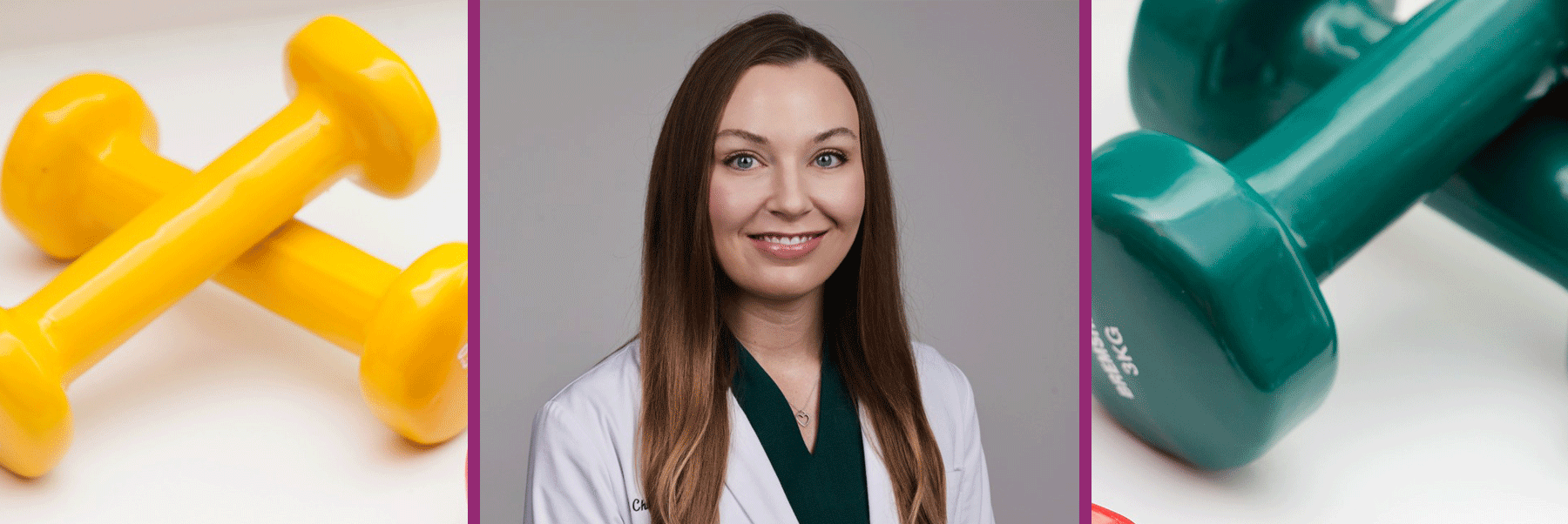The information provided here is for educational purposes only and does not substitute for professional medical advice. The content reflects the expertise of the presenter and is not necessarily the opinion, views, or recommendations of the MGFA. Please consult with your doctor and healthcare professionals for specific recommendations and advice pertaining to your healthcare/treatment.
Is it safe to do physical therapy or exercise when you have myasthenia gravis? Dr. Christina Chrisman, a neuromuscular specialist at Banner University Medical Center and the University of Arizona, explores the scientific literature concerning this subject in our recent Wellness Webinar, “Myasthenia Gravis and Physical Therapy.”
Dr. Chrisman summarized 11 studies on the topic of physical activity, addressed the common concerns surrounding the safety of exercise for people with MG, and emphasized the benefits of both physical and respiratory therapy.
Watch the webinar below to gain a deeper understanding of this topic, including a review of individual studies addressing physical therapy in MG. Key points of her webinar are summarized below.
Key Points Discussed:
- Exercise Considerations: Dr. Chrisman explained that MG differs from other neuromuscular diseases that result in abnormal or damaged muscles, like MS or ALS. In these diseases, strenuous exercise can be harmful. In MG, exercise can be beneficial if done properly and under a doctor’s care. She emphasized balancing muscle use with adequate rest to prevent overexertion.
- Benefits of Physical Therapy: While evidence on physical therapy in MG is limited, the available studies indicate that progressive strength and endurance training can improve muscle function and overall health. These improvements can help counteract the muscle weakness and fatigue common in those with MG.
- Respiratory Training: Specific exercises to strengthen respiratory muscles, like inspiratory and expiratory muscle training, have shown significant benefits in improving lung capacity, respiratory endurance, and reducing shortness of breath in MG patients.
- Balance and Fall Prevention: Incorporating balance training is important to reduce the risk of falls, especially for individuals with weakness in their legs and core muscles.
- Study Limitations: Dr. Chrisman highlighted that the evidence supporting physical therapy for MG is based on limited studies with small sample sizes. More high-quality research is needed to further explore the benefits of exercise in MG.
Practical Recommendations:
- Supervised Exercise: Individuals with MG should begin exercise under the guidance of a physical therapist, especially when starting or resuming exercise after a period of inactivity. Low-impact activities such as walking, swimming, or stationary biking are suggested as safe options to build endurance gradually.
- Tailored Programs: Physical therapy programs should be tailored to each patient’s condition and needs, focusing on progressive resistance, balance, and respiratory exercises. People with MG should also avoid high-intensity workouts that could lead to muscle overuse and fatigue.
- Respiratory Care: For individuals experiencing breathing difficulties, respiratory training can help strengthen the diaphragm and improve breathing efficiency. Regularly using devices like incentive spirometers may support respiratory muscle function if and when a patient goes into MG crisis.
- Psychological Support: Combining physical therapy with psychological interventions can further improve patients’ quality of life, addressing the emotional and mental fatigue often associated with MG.
- Monitoring Progress: Tools like the Myasthenia Gravis Quality of Life (MG-QOL) score and other functional assessments can help track the impact of physical therapy on daily life and provide feedback for ongoing care.
In conclusion, while physical therapy and exercise can play a role in improving the quality of life for MG patients, it is essential to customize exercise plans carefully, ensuring they align with each person’s abilities and disease severity.

